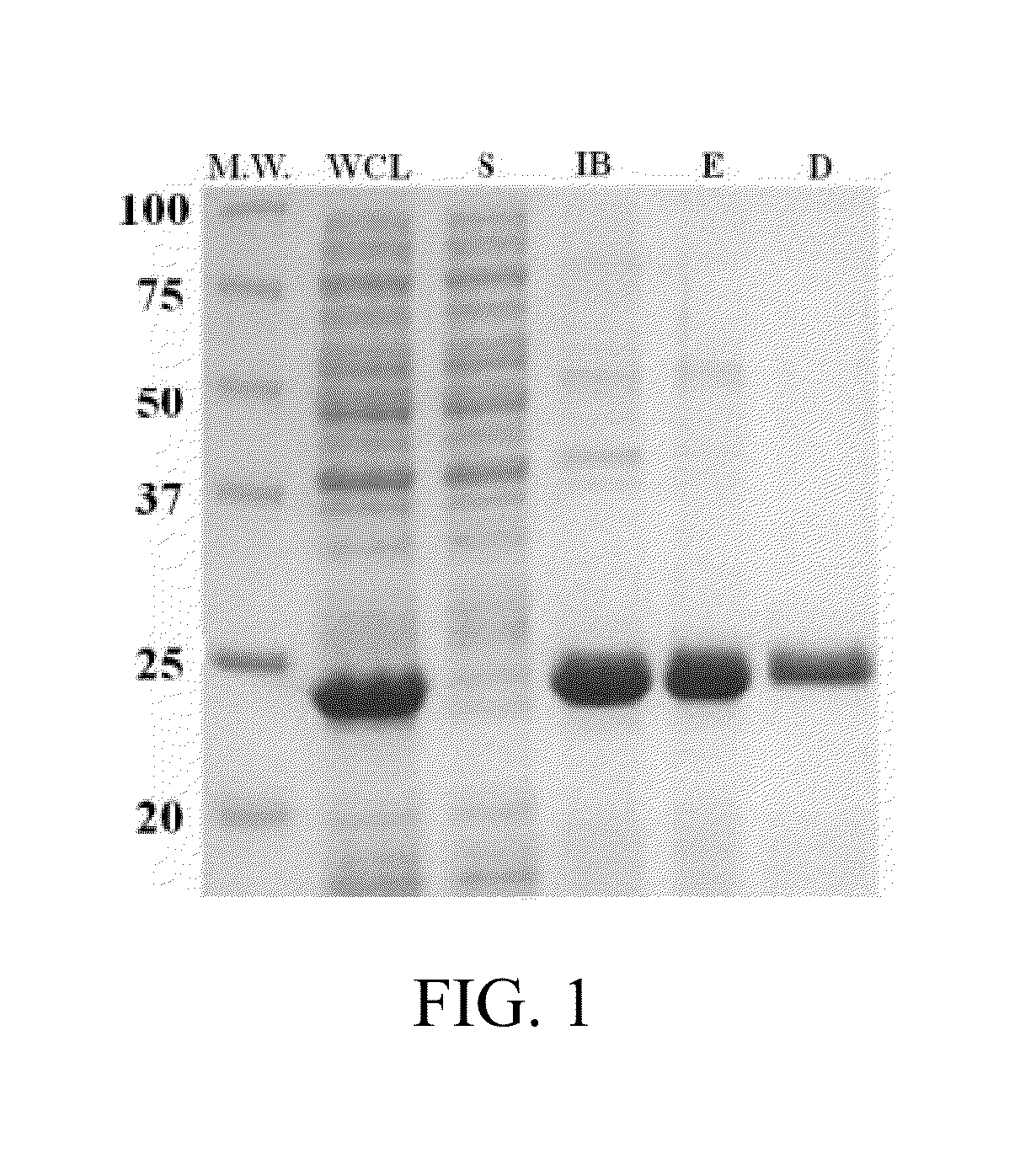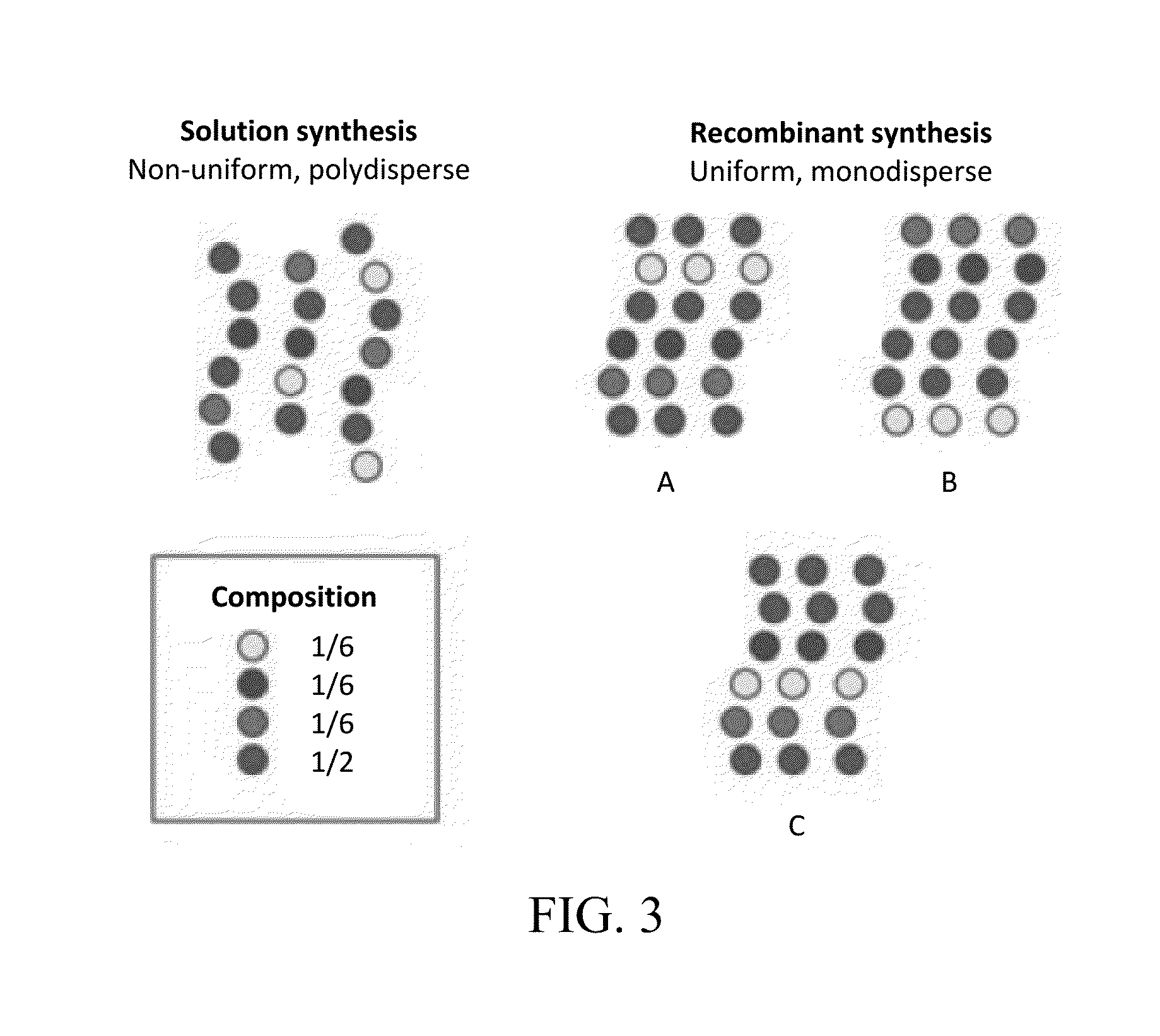Peptide-Based Materials
a technology of peptides and materials, applied in the field of peptide-based materials, can solve the problems of low sequence diversity, inability to realize long-term future of synthetic materials, and difficulty in realizing desirable properties, so as to increase the significance of enthalpic contributions to elasticity, the effect of low conversion rate of elastic energy
- Summary
- Abstract
- Description
- Claims
- Application Information
AI Technical Summary
Benefits of technology
Problems solved by technology
Method used
Image
Examples
example 1
PLEY, PLKY and PLAA
[0160]As noted above, spinnability predicts processability for film casting and for molding. Electrospinning designed polypeptides are advantageous not only for producing fibrous materials, but also for diagnosing suitability for other kinds of materials.
[0161]Properties of PLEY are known from experimental study (Khadka et al., 2011; Haynie et al., 2012; Haynie et al., 2013; Khadka et al., unpublished data). PLEY is 80% Glu; PLGA is all Glu (Table 4). PLEY is spinnable; PLGA is not spinnable at any DP, concentration or ionic strength (Khadka et al., 2011; Haynie et al., 2012). PLGA thus resembles PLL, which is not spinnable even though PLO is spinnable. Asp differs from Glu by just a single methylene group in the side chain, just like Orn and Lys. It is expected, then, that PLAA is less ionized than PLGA and the electrostatic potential of PLAA is reduced by deprotonation at pH 7. The same reasoning probably explains why PLO is spinnable but PLL is not.
[0162]Method...
example 2
ELP
[0170]This example uniquely combines ELP, sequence randomization and lysine. Various other amino acids are substituted for Lys to demonstrate alternative methods of crosslinking.
[0171]Elastin plays a key role in determining the mechanical properties of skin and other tissues. The structure and function of the protein have been studied extensively by various investigators. There have been numerous studies on ELPs, that is, (VPGVG)n-based peptides, where V is valine, P is proline and G is glycine. VPGVG is a repeat unit in wild-type elastin. The most common approach to structure modification in ELP research has been to substitute any amino acid besides P or V for X in VPGXG, and for some mole fraction of such pentapeptides relative to VPGVG to occur in the same polymer prepared by recombinant methods. The present invention differs from all previous ELP work in several significant ways. One, the focus is on random sequences, not repeats of VPGXG. No one has studied random sequences ...
example 3
Structural Proteins Other than Elastin
[0178]As in Example 2, the peptide structures are bio-inspired, being based on the sequences of resilin, collagen and other structural proteins.
[0179]Method.
[0180]The approach outlined in Example 2 is not specific to ELP; other elastic proteins are known. Essentially the same approach as in Example 2 is therefore applied for essential features of the known amino acid compositions of α-keratin, β-keratin, spider silk, collagen (a connective tissue protein), resilin and titin (an elastic protein in skeletal muscle). These polymers have a high percentage of valine (Val), glycine (Gly), alanine (Ala) and proline (Pro). Physical properties of the noted proteins are known from extensive experimental study by other investigators, for example, Elvin et al. (2005). In elastin, Lys residues occur between Pro-rich segments. The side chains of these Lys residues are enzymatically cross-linked in neighboring chains, forming an elastic network. In the titin p...
PUM
| Property | Measurement | Unit |
|---|---|---|
| mass | aaaaa | aaaaa |
| concentrations | aaaaa | aaaaa |
| concentrations | aaaaa | aaaaa |
Abstract
Description
Claims
Application Information
 Login to View More
Login to View More - R&D
- Intellectual Property
- Life Sciences
- Materials
- Tech Scout
- Unparalleled Data Quality
- Higher Quality Content
- 60% Fewer Hallucinations
Browse by: Latest US Patents, China's latest patents, Technical Efficacy Thesaurus, Application Domain, Technology Topic, Popular Technical Reports.
© 2025 PatSnap. All rights reserved.Legal|Privacy policy|Modern Slavery Act Transparency Statement|Sitemap|About US| Contact US: help@patsnap.com



